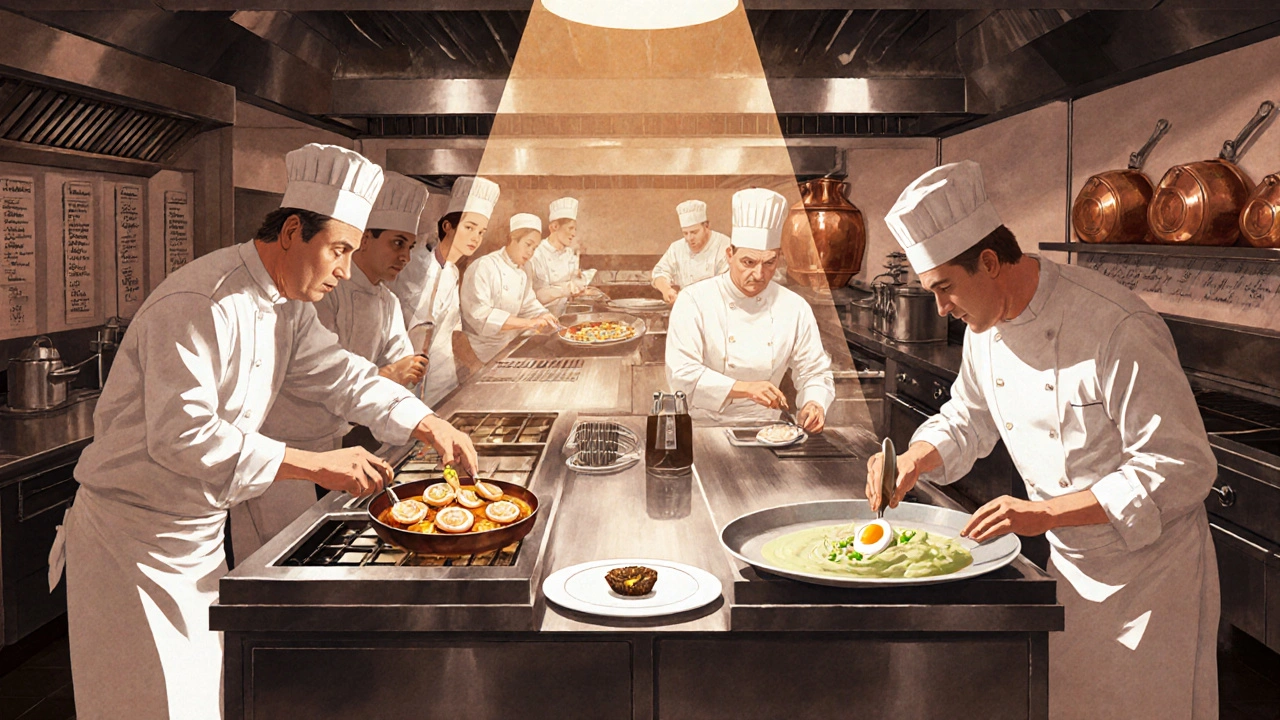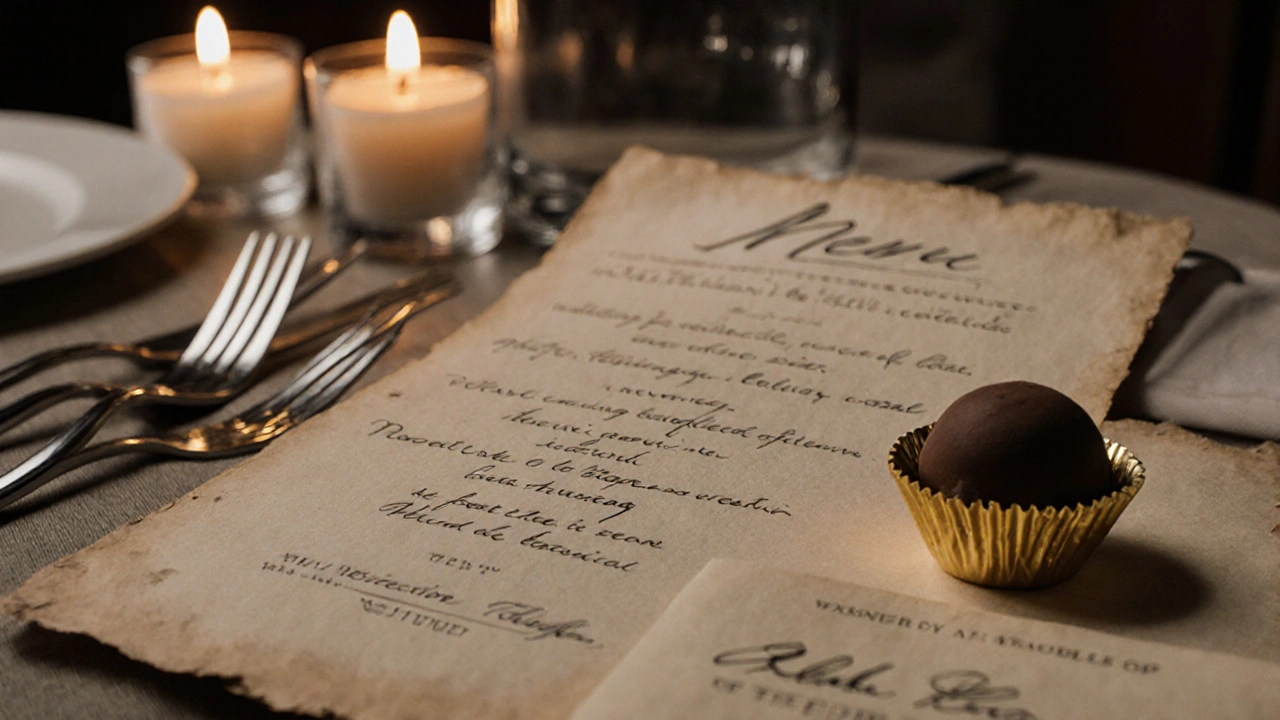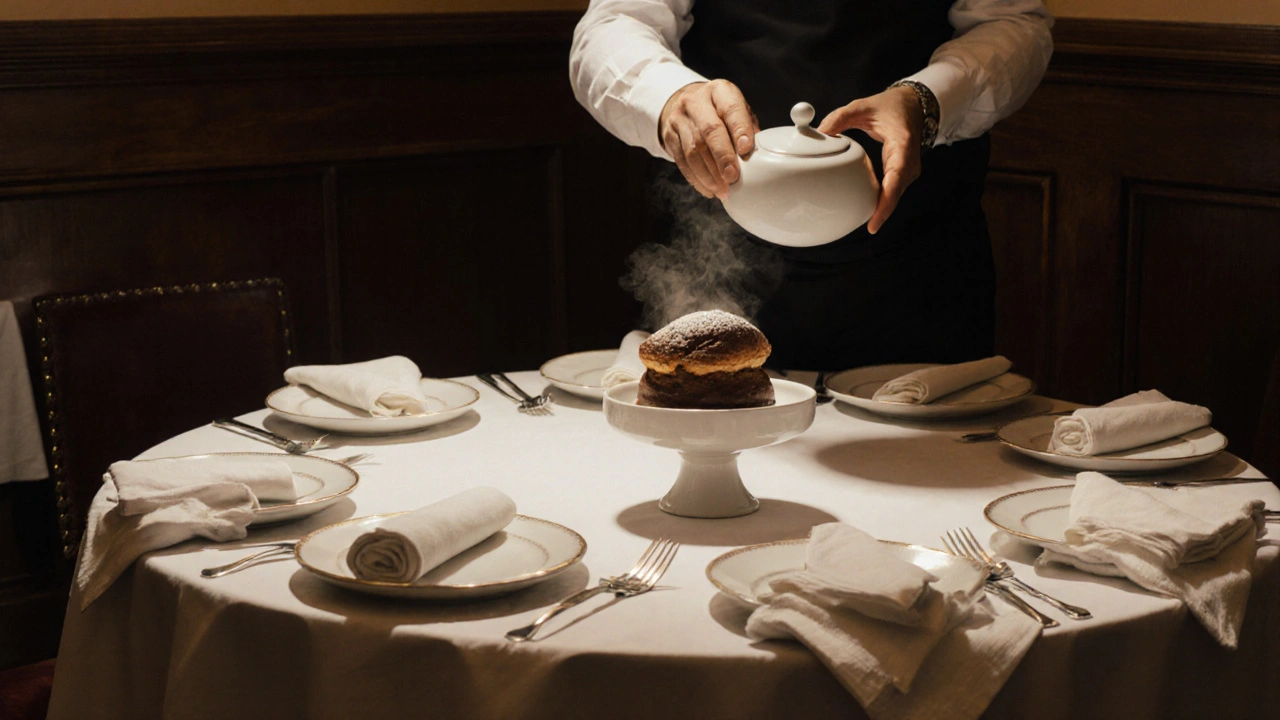When you walk into Restaurant Gordon Ramsay in Chelsea, you don’t just sit down for dinner-you step into one of the most precise, disciplined, and emotionally charged dining experiences in the world. It’s not just food. It’s a performance. A 12-course symphony of flavor, texture, and timing that’s been refined over two decades. And yes, it costs £310 per person before drinks. But here’s the truth: if you’ve ever wondered what a three-Michelin-star meal actually feels like, this is where you find out.
What Makes a Restaurant Worth Three Stars?
The Michelin Guide doesn’t hand out three stars like trophies. Only 140 restaurants worldwide have them. For Gordon Ramsay’s Chelsea restaurant, it’s been holding that top rating since 2001-longer than any other UK restaurant. That’s not luck. It’s consistency. Every dish, every plate, every napkin fold is checked. The kitchen runs like a military operation: 12 chefs, each assigned to a station, moving in silence except for the occasional whispered confirmation: ‘Yes, chef.’
The stars aren’t for the chandeliers or the linen tablecloths. They’re for the food that makes you pause mid-bite. For the scallop seared to just shy of translucence, resting on a bed of pea purée that tastes like spring in a spoon. For the truffle-infused quail egg that bursts open with a single fork tap. These aren’t fancy tricks. They’re mastery.
The Menu: A Journey Through Technique
The tasting menu changes every six weeks, but the structure stays the same: 12 courses, no choices, no substitutions. You don’t pick. You trust. And if you’ve eaten at a place like this before, you know that’s the point.
It starts with a single amuse-bouche-a tiny puff of parmesan foam on a crisp tuile. Then comes the famous bread course: warm, buttery brioche served with two butters-one salted, one infused with black garlic. Simple? Yes. But the garlic butter alone took three years to perfect. The team tested 47 variations before landing on this one.
By course five, you’re eating langoustine with saffron and yuzu, the shellfish so sweet it tastes like the ocean was distilled. Then, the standout: roasted venison with chestnut and red wine jus. The meat is cooked to 58°C-just enough to leave it rosy in the center. It’s plated with a single sprig of rosemary, but the jus? It’s reduced for 18 hours. That’s not cooking. That’s alchemy.
And then, dessert. Not a cake. Not a tart. A ‘Chocolate Soufflé’ that arrives at your table in a ceramic pot, still bubbling. The server lifts the lid slowly, and steam rises like a curtain. You stir in the dark chocolate sauce, and the inside collapses into a molten river. It’s not just rich. It’s unforgettable.
The Service: Invisible, Yet Everywhere
Service here isn’t about smiling and refilling water. It’s about anticipation. The sommelier doesn’t just recommend wine-he asks what you’ve eaten before, what you like, and what you’re willing to spend. Then he brings you a 2005 Château Rayas from Châteauneuf-du-Pape that you didn’t know you needed. It costs £195 a glass. You drink it. And you understand why.
Waiters don’t ask if you want more bread. They just bring it. They don’t say ‘Enjoy your meal.’ They disappear. You notice them when you need them. And when you don’t, you forget they’re there. That’s the goal.
There’s no rush. No clock ticking. You’re given two hours, but most guests stay for three. No one ever feels hurried. Not even when you’re the last table left.

The Atmosphere: Quiet, Not Cold
It’s not loud. There’s no music. No clinking glasses to drown out conversation. The room is warm-dark wood, soft lighting, muted tones. The tables are spaced far enough apart that you can whisper without fear of being overheard. This isn’t a place for selfies or Instagram reels. It’s a place for silence, for savoring, for remembering what you ate three years ago and still thinking about.
There are no TVs. No menus on tablets. Just paper menus, handwritten in elegant script. The wine list is thick, but the sommelier guides you. You don’t need to know what a ‘Clos de Vougeot’ is. You just need to say yes.
Is It Worth It?
Let’s be real: £310 is a lot. Add wine, and you’re looking at £700-£900 for two. That’s more than a weekend in Paris. So why do people come back?
Because it’s not about the price. It’s about the proof. Proof that human skill can turn ingredients into emotion. Proof that patience, precision, and obsession matter. Proof that in a world of fast food and TikTok meals, someone still spends 18 hours reducing a sauce because it’s the right thing to do.
People don’t come here to brag. They come because they’ve waited years for this. A birthday. An anniversary. A moment that needed to be marked. And when you leave, you don’t just feel full. You feel changed.

What You Should Know Before You Go
- Book at least 3 months ahead. Reservations open on the first of the month for the following three months. Set a reminder. It fills up faster than a Taylor Swift concert.
- Dress code: Smart casual. No jeans. No sneakers. A blazer or dress is expected. They won’t turn you away, but you’ll feel out of place.
- Arrive 10 minutes early. They don’t wait. Your table is ready at 7:00 PM sharp. If you’re late, they’ll serve the first course without you.
- Don’t bring your own wine. Corkage is £120, and they’ll only allow it if you’ve booked a special tasting. Most guests don’t bother.
- Tip: 12.5% is included. No need to add more. But if you want to thank the sommelier? A handwritten note goes further than cash.
Who Is This For?
This isn’t for foodies who want to try everything. It’s for those who want to experience one thing, perfectly. If you’re looking for a fun night out with friends, go to a tapas bar. If you want to celebrate something real-love, achievement, survival-this is it.
It’s for the couple who met in London 20 years ago and are returning to the same table. For the chef who saved for five years to bring his mother here. For the person who needed to believe that excellence still exists.
What Comes After?
After your meal, you’ll get a small gift: a printed menu, signed by the chef, and a single chocolate truffle wrapped in gold foil. You’ll take it home. You won’t eat it right away. You’ll keep it in a drawer. And years from now, when you’re feeling ordinary, you’ll open it again. And you’ll remember: once, you ate something that didn’t just fill you. It moved you.
How long does the dining experience at Restaurant Gordon Ramsay last?
The full tasting menu typically takes between 2.5 to 3.5 hours. Guests are encouraged to take their time, and the staff adjust pacing to match your rhythm. Most people leave around 10:30 PM if they start at 7:00 PM.
Is there a vegetarian option at Restaurant Gordon Ramsay?
Yes. The kitchen offers a dedicated vegetarian tasting menu upon request, but you must notify them at least 72 hours in advance. The vegetarian menu is not a simplified version-it’s a full, equally complex 12-course experience built around seasonal vegetables, fungi, and dairy, with the same level of technique and flavor depth as the main menu.
Can I order à la carte instead of the tasting menu?
No. Restaurant Gordon Ramsay only offers a fixed tasting menu. There is no à la carte option. This is by design-to ensure every guest receives the same curated journey through the chef’s vision, with perfect timing and balance between courses.
What’s the best time of year to book a table?
The best time to book is January for summer dates, and July for autumn/winter. Summer and holiday periods (Christmas, New Year’s Eve) fill up within minutes of reservations opening. Avoid booking during London Fashion Week or major events like the Chelsea Flower Show-they’re the busiest times of the year.
Do they accommodate food allergies?
Absolutely. The kitchen has a dedicated allergy protocol. When you book, you’ll be asked to list any allergies or intolerances. The chef personally reviews each case, and the entire service team is trained to handle dietary restrictions without compromising the experience. Gluten-free, nut-free, shellfish-free-all are managed with precision.
